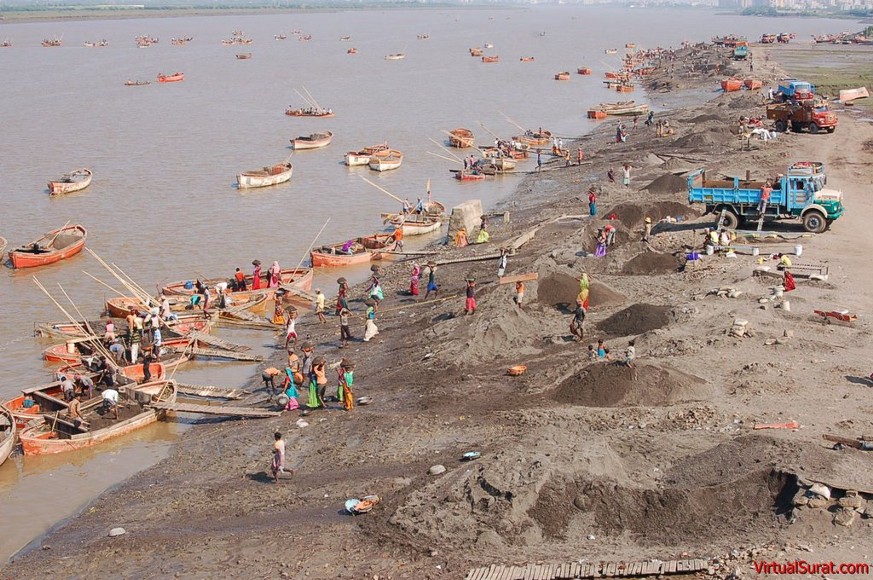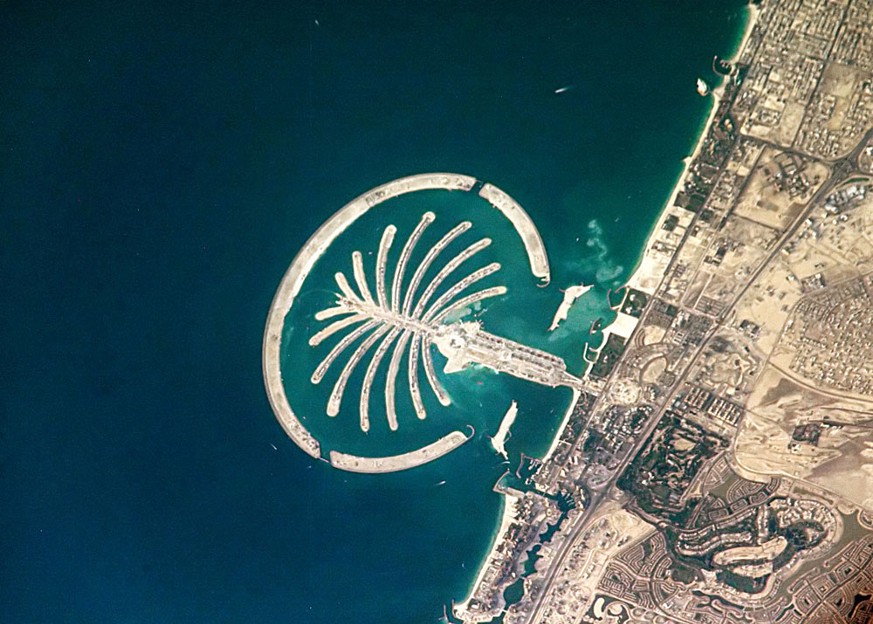Sand Wars

Image Credit: Vikram Bartwal, www.virtualsurat.com
After water, the largest volume of natural material used to support our global growth is sand. According to a special report by the UN Environmental Program, “Sand: Rarer Than One Thinks”, up to 59 billion tons of aggregated sand and gravel is extracted annually, primarily to enable the production of cement for use in the burgeoning construction industry. A ton of cement requires some 6 to 7 more tons of sand and gravel, enough, according to the report “to build a wall 27 meters high by 27 meters wide around the equator.”
China is by far the biggest supplier and the biggest user, about 58 % of total supply and demand. To support its recent exponential growth, its use has increased 437.5% in the past two decades. In every nation, every place, every road, and every building, sand, extracted from quarries, riverbeds, and coastal marine areas, is being removed from where it was created by centuries of geological processing, transported to faraway places, transformed into every form of construction, and used as a base element in the growth-driven alchemy of the modern economy.
The impact on the environment is enormous, with measurable destructive consequence for biodiversity, land loss, hydrological function, water supply, infrastructure, climate, landscape, and extreme events. These are just a few of the serious outcomes of such massive, localized extraction.
Beach renewal is a use perhaps familiar to us all. But consider the sand required to expand Singapore to provide some 130 square kilometers of land reclaimed from the sea by land fill. Most of that sand came from Indonesia, the rest from Malaysia, Thailand, and Cambodia, impacting and deteriorating those environments and creating political tensions that have forced a negotiated ban. Or consider Dubai and its creation of artificial islands that used some 385 million tons of sand to construct the Palm Jumeriah, the Palm Jebel Ali, and the World Island Project, all in the prospect of need for office and residential space for development of a new modern world city. The Burj Khalifa Tower, at 828 meters arguably the highest building in the world, sits at the center of this development as a hubristic assertion of Dubai’s economic nationalism; it was constructed using massive amounts of sand imported not from the Arabian peninsula, but Australia.

Image Credit: Dubai’s construction of artificial sets of islands (like The Palm Jumeirah, pictured) lends to the strain of marine sand resources. Photo: NASA.
Much of this extraction comes from illegal coastal mining, transported by smugglers, financed by organized crime, and enabled by lack of regulation and bureaucratic corruption. Ironically, in Morocco, a stretch of beach was transformed into a rocky landscape by extraction of all its sand with the intent to build hotels, roads, and tourism-related infrastructure elsewhere dependent on the beauty of the sand beaches there left untouched.
Sand is cheap, often priced only as a measure of its extraction and transportation. Its true cost as a non-renewable resource; its detriment by channel erosion, turbidity, changed pH, and sediment in its surrounding ecosystem; its disturbance of the benthic fauna and lowered water table of fish spawning habitat, feeding patterns, and the livelihood of local fishers; its contribution to emissions through CO2 release in cement manufacture and dust to the atmospheric conditions locally and regionally; its under-priced and untaxed value; and its subversion of governance and economic return — none of these costs are factored into what is actually the true price per grain of sand.
A UNEP survey of relevant policies shows little hope for international protection or oversight of this problem. No international conventions exist to regulate the extraction, use, or traded of land-based sand. The UN International Seabed Authority seems without effect. The UN Convention on the Law of the Sea pertains in part, but many of the primary parties are not signatories of that treaty. Regional agreements do oversee some aspects of such activity in Northeast Atlantic, the Baltic, the Mediterranean, and the Caribbean, and some national and state coastal policies may apply, but that has not addressed the need for international standards, agreement, enforcement, and action to address the larger problem. Consider China’s blatant construction of islands in the South China Sea, as a geo-political extension of its economic zone and standing. Where has all that sand come from? Ask that question, and meet an expression of disrespect and disdain: “Go pound sand.”
- - -
- Login to post comments
-


